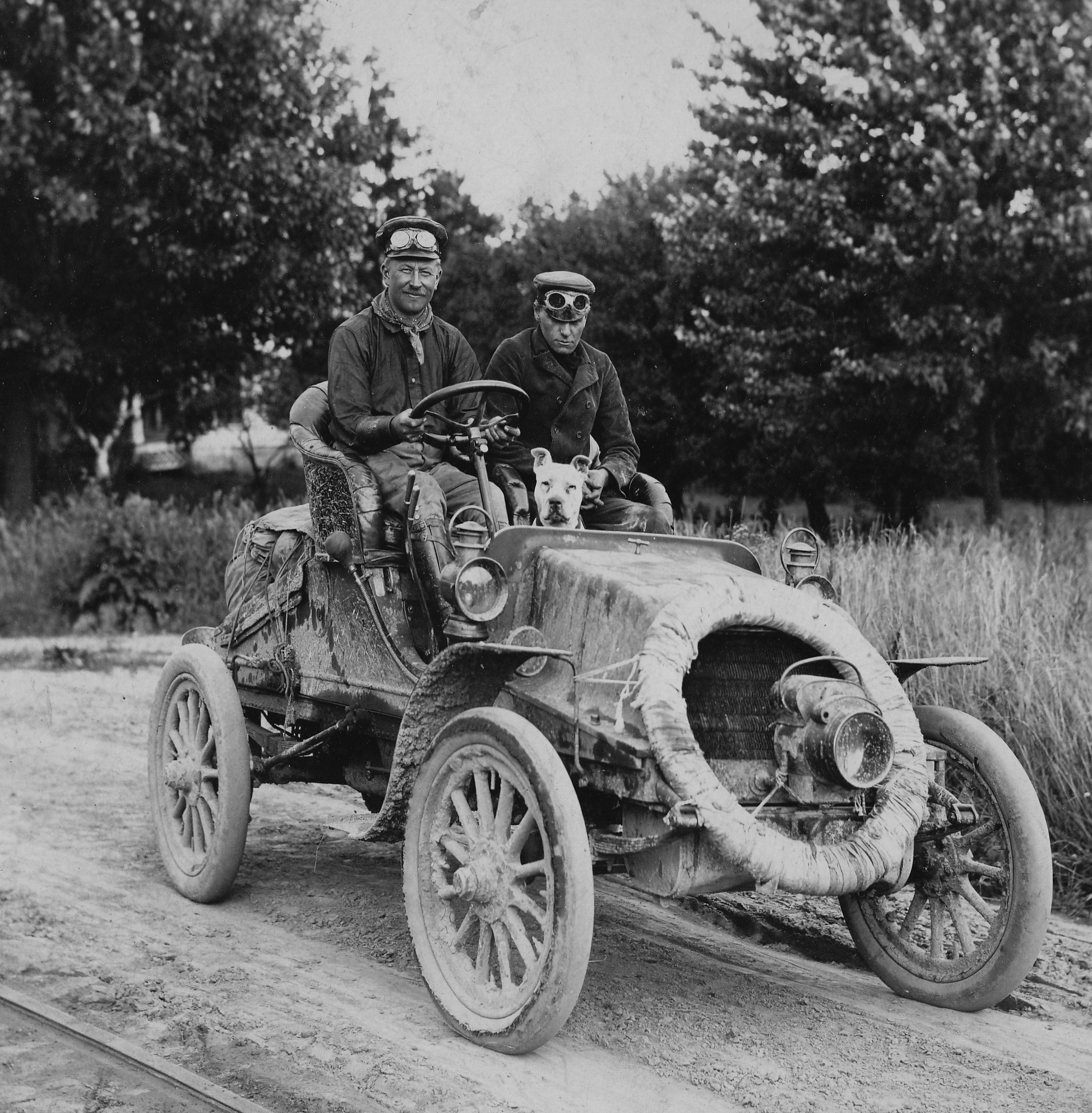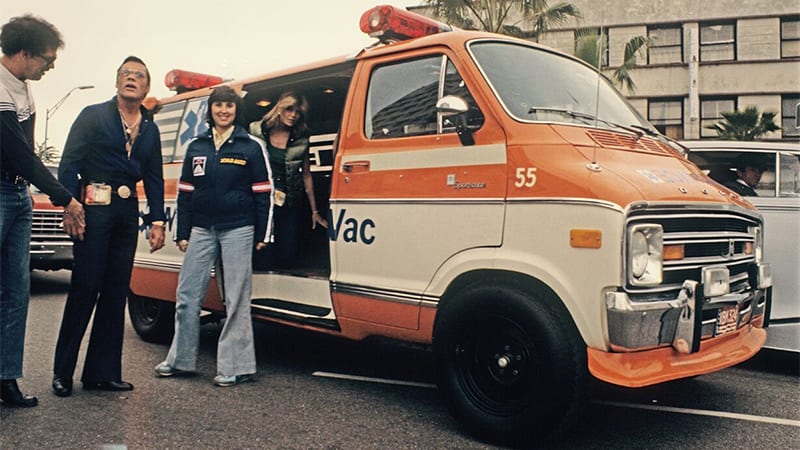| Image from the 1984 film Cannonball Run 2. |
Long have Americans embraced the automobile, and even longer have we embraced the open road. Roads have been around for millennia, as essential links between population centers, holding civilization itself together. The Roman Empire could not have managed its size without roads holding its farflung provinces together, and the United States is no different.
Following the invention of the automobile, roads had to be reinvented. Before World War I, the United States had about 18 miles of paved roads from coast to coast. The US Route System was spurred on in 1916 with the Federal Aid Road Act, which was government spending that footed half the bill for US highways across the country. Automobile associations and manufacturers were starting to promote recreational driving, which went hand in glove with the US Route System. Paved roads are much more appealing to drive on.
One inspiration for improved highways in the United States was Vermont doctor Horatio Nelson Jackson, who in 1903 became the first documented person to drive a car across the United States. He started in San Francisco and ended in New York, following dirt roads and cow paths and railroad beds. Jackson made a $50 bet with someone that he could do it. He didn’t own a car himself, so he bought one, took some driving lessons, and hired a mechanic to help him out as he made his way eastward. The journey took 63½ days, and burned over 800 gallons of gasoline. Jackson’s journey was followed in the newspapers, and is credited with helping to generate enthusiasm for the eventual network of paved US Routes.
Following the invention of the automobile, roads had to be reinvented. Before World War I, the United States had about 18 miles of paved roads from coast to coast. The US Route System was spurred on in 1916 with the Federal Aid Road Act, which was government spending that footed half the bill for US highways across the country. Automobile associations and manufacturers were starting to promote recreational driving, which went hand in glove with the US Route System. Paved roads are much more appealing to drive on.
One inspiration for improved highways in the United States was Vermont doctor Horatio Nelson Jackson, who in 1903 became the first documented person to drive a car across the United States. He started in San Francisco and ended in New York, following dirt roads and cow paths and railroad beds. Jackson made a $50 bet with someone that he could do it. He didn’t own a car himself, so he bought one, took some driving lessons, and hired a mechanic to help him out as he made his way eastward. The journey took 63½ days, and burned over 800 gallons of gasoline. Jackson’s journey was followed in the newspapers, and is credited with helping to generate enthusiasm for the eventual network of paved US Routes.
 |
| Horatio Nelson Jackson on the first cross-country car trip, 1903. |
By 1938, politicians and civil engineers were starting to talk about a system of limited-access highways that would eventually become the Interstate Highway System. Progress on the Interstate Highway System sped up when Dwight Eisenhower became president. He had long felt that the United States needed a better road system for possible military situations, and had been impressed by the Reichsautobahn system in Germany, which he experienced first hand while commanding American forces in Europe during World War II. Eisenhower signed into law the Federal Aid Highway Act of 1956, which started the construction of the Interstate Highway System that we know today—which would later be named for President Eisenhower himself.

So it would make sense, then, that when enough highways were completed, someone would try to race across the country. By 1971, we’d come a long way since Horatio Nelson Jackson’s day, and his 63½-day record. It was time to beat that record, and beat it good. No doubt others had driven across the country since Jackson’s day, and had made better time, but it was time to set an all-time record. The man who decided to do this was racecar driver Brock Yates, who teamed up with his son, a friend, and the editor of Car & Driver magazine. They departed from Darien, Connecticut. Their destination: the Portofino Inn in Redondo Beach, California.
They would drive in shifts to see how quickly they could cross the United States. Their route took them through 13 states, traveling over 2,800 miles. They drove a 1971 Dodge Custom Sportsman van, crossing the country in 40 hours and 51 minutes on May 3, 1971. Quite an improvement on Horatio Nelson Jackson’s record!
Car & Driver covered this event, of course. It was dubbed The Cannonball Run, named in honor of Erwin “Cannonball” Baker, an early record-setter in cross-country travel. Baker crossed the United States from New York to Los Angeles on a motorcycle in 11 days in 1914. He broke his own record using an automobile in 1933, completing the same route in 53½ hours, averaging 50 miles per hour. While there was no national 55 mile per hour speed limit yet, Baker no doubt broke some speed limits along the way. What’s more incredible is that he made the trip by himself. This record stood until Brock Yates’ team broke it, but to this day, no one has beaten Baker’s time for a solo trip.
Following Yates’ 1971 trip, the Cannonball Run gained some notoriety, but was not widely known. Soon after, an actual race was organized, and by 1975 was run three times. An entry fee of $50 was required, which Yates and the organizers collected, plus participants had to donate an additional $200 to charity. It’s unclear why the charitable donation was required; possibly the idea was to detract from the fact that such a race isn’t possible without breaking all sorts of laws. The start point and the end point of the race were set: Darien, Connecticut to Redondo Beach, California. Drivers would leave at any time during a 24-hour window. Their departure and arrival times tracked by punch clocks at the start and end points. Everything else was up to the drivers. They could work alone or in teams of two or more drivers. They could choose their own route. They could use any illicit drugs they wanted. Radar detectors were permitted. And, of course, they could break the speed limit.
 |
| One team completed the Cannonball Run in a phony ambulance, counting on the police not stopping them. This real trick made its way into the script of the 1981 movie. |
Yates’ 40-hour-and-51-minute record fell during these races. The world record was set in the 1975 race, two years after the United States passed the 55-mile-an-hour speed limit, with the winning two-man team clocking in at 35 hours and 53 minutes. The race was run once more in 1979, but the record stood after that.
This race inspired the 1981 movie Cannonball Run and its sequel, as well as the lesser-known 1976 film, The Gumball Rally. The race was not run again after 1979, but the route remains famous, and drivers still make their own runs regularly. In 2006, the run was done in an incredible 31 hours and 4 minutes, and it was broken just once more, as of this writing, in 2013. In October 2013, a team of three men led by Atlantan Ed Bolian set the current record of 29 hours and 50 minutes. They averaged 98 miles per hour, and cut out stops along the way by installing two 22-gallon gas tanks in the trunk of their car. Their top speed on this trip was 158 miles per hour, at one point. They would have done better if they hadn’t been held up in traffic around New York, which cost them 15 minutes. Technology on board allowed them to know traffic conditions on the highway, and to better detect police radar and weather. None of the team slept for more than an hour. They were equipped with iced coffee and a bedpan, which further reduced the need for stops. Ed Bolian is proud of his achievement, but insists that although he broke all kinds of laws while doing it, he has “utmost respect for law enforcement,” as he stated in a CNN interview. Whatever gets you through the day, Ed.
| The map varied a little each time the race was run, but it followed the same basic route each time. |


Comments